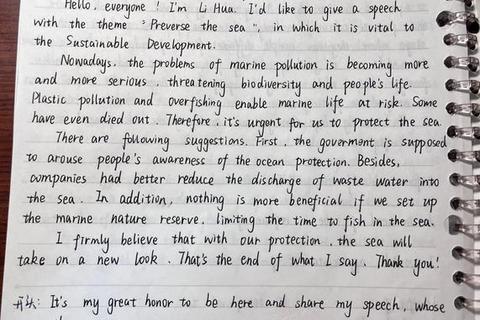Unlocking the Secrets of Effective Recommendation Letters: Strategies and Examples
A well-crafted recommendation letter can be a decisive factor in academic or professional pursuits. For students preparing for English proficiency exams or university applications, mastering the art of writing persuasive recommendation letters is essential. This article explores the core principles of high-scoring recommendation letters, provides actionable writing techniques, and illustrates these concepts through annotated examples. By integrating educational theories and practical insights, readers will gain a systematic approach to creating compelling recommendations that meet formal standards while resonating with evaluators.
I. The Anatomy of a Recommendation Letter

A recommendation letter’s structure determines its clarity and impact. Typically, it comprises three sections: an introduction, body paragraphs, and a conclusion.
1. Introduction: Establishing Credibility
The opening paragraph must establish the recommender’s authority to evaluate the candidate. Phrases like “As Professor X, who supervised Y’s research project…” or “In my capacity as Manager at Z Company…” signal expertise. Simultaneously, state the purpose of the letter concisely—for example, “It is my pleasure to recommend [Name] for [Program/Position].”
2. Body: Highlighting Competencies
Each body paragraph should focus on a specific strength, supported by examples. For instance:
Use quantifiable achievements when possible: “She improved team productivity by 30% by implementing a new workflow system.”
3. Conclusion: Reinforcing the Endorsement
Reiterate the recommendation with confidence, e.g., “Without reservation, I endorse [Name] for this opportunity.” Provide contact details for follow-up inquiries.
II. High-Scoring Writing Techniques
To elevate a recommendation letter from generic to exceptional, employ these strategies:
1. Align with the Target Institution’s Values
Research the program or company’s mission. If applying to a sustainability-focused MBA program, emphasize the candidate’s environmental initiatives. This alignment demonstrates that the recommender understands the evaluator’s priorities.
2. Balance Specificity and Brevity
Avoid vague praise (“hardworking”). Instead, write: “During finals week, he completed three lab reports while organizing peer study sessions.” Use the CAR (Context-Action-Result) framework to structure examples.
3. Leverage Emotional Appeal
Admissions committees seek candidates who inspire others. Phrases like “Her enthusiasm for robotics ignited curiosity in younger students” humanize the applicant.
4. Avoid Clichés and Redundancy
Replace overused terms like “team player” with vivid alternatives: “She transforms group challenges into opportunities for consensus-building.”
III. Case Study: A Model Recommendation Letter
Prompt: Write a recommendation letter for a student applying to a Master’s in Public Health program.
Sample Excerpt:
> “As Director of the Community Health Initiative, I supervised [Name]’s fieldwork in rural clinics. Her ability to analyze local health data (e.g., identifying a 25% gap in pediatric vaccination rates) led to a grant-funded outreach program. Beyond technical skills, she demonstrated cultural sensitivity by collaborating with village leaders to design multilingual educational materials.”
Analysis:
IV. Common Pitfalls and Solutions
1. Overemphasis on Academic Scores
While grades matter, evaluators prioritize holistic qualities. Balance academic praise with examples of creativity or leadership.
2. Lack of Differentiation
Generic letters fail to distinguish candidates. Ask the applicant for unique anecdotes or challenges they’ve overcome.
3. Ignoring Formatting Standards
Use formal letterhead, 12-point Times New Roman font, and 1-inch margins. Proofread for grammatical errors.
V. Conclusion: Crafting a Lasting Impression
A powerful recommendation letter combines factual rigor with narrative depth. By structuring content logically, emphasizing unique strengths, and avoiding clichés, recommenders can amplify a candidate’s profile. For writers, continuous practice and familiarity with institutional expectations are key. Ultimately, the best recommendations don’t just describe a candidate—they tell a story that compels evaluators to say “yes.”
This framework equips readers to navigate both the technical and creative demands of recommendation letter writing. By applying these principles, students and professionals alike can transform routine endorsements into compelling testimonies of potential.


